| Vintage Pulp | May 19 2022 |

So just out of curiosity, why aren't you paddling an Uber? Seems like everyone else is.
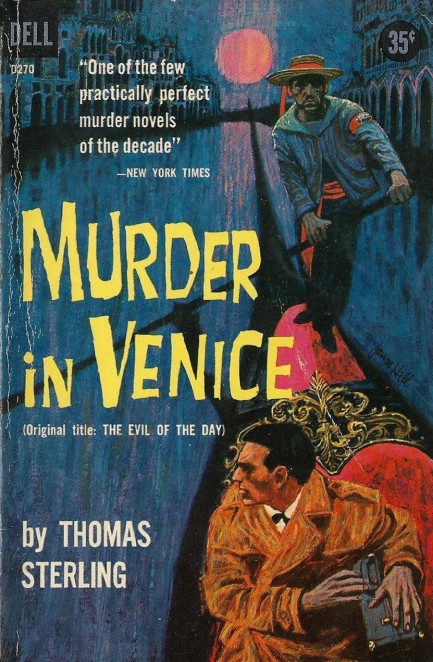
This spectacular cover for Thomas Sterling's Murder in Venice was painted by James Hill, an artist of obvious skill but one we rarely encounter. The book was originally published in 1955 as The Evil of the Day, with this beautiful Dell edition coming in 1959. Sterling tells the tale of a man named Cecil Fox who invites three guests from abroad to his Venetian mansion in order to pretend he's near death and tease them with the promise of inheriting his wealth. These three guests are people he's not had much contact with in recent years, which makes the game even more delicious for him, the way the trio feel plucked from their lives of obscurity to possibly be gifted wealth and status. Factions form and subterfuges abound, but everything is thrown into disarray when one of the guests is murdered. Was it to eliminate a possible inheritor? To add intrigue to the game? Or for other, unguessable reasons?
Go with option three. The whole point of murder mysteries is to be unguessable. Murder in Venice is a pretty good puzzler, with a small set of curious characters and a few forays into the Venetian night. Sterling gets inside the head of his protagonist Celia Johns quite effectively. She's the personal assistant to one of the invitees, and thus has no skin in the game. She just wants a fair wage for a fair day's work. At least that what she says. Her host Mr. Fox, on the other hand, seems to think everyone is corruptible, and everyone is money hungry—it's just a matter of baiting the hook in the right way. He thinks he knows most people better than they know themselves, and he doesn't see Celia as any sort of exception.
While Murder in Venice is a mystery, it's also a minor sociological examination of what it means to some people to be rich but face losing their money, and what it means to others to not value money at all. Sterling scored a success, but interestingly, he borrowed the idea from Ben Johnson's play Volpone, which premiered way back in 1606. Sterling was up front about his inspiration, and within his novel the play even makes an appearance on a drawing room shelf. Frederick Knott, who wrote the famed plays Wait Until Dark and Dial M for Murder, later adapted Sterling's novel into a 1959 play called Mr. Fox of Venice. The next year the book was published in France as Le Tricheur de Venise and won Sterling the Grand Prix de Littérature Policière for foreign authors. And finally, Joseph Mankiewicz combined the original play, Sterling's novel, and Knott's play into a 1967 movie called The Honey Pot.
When material gets recycled to that extent, it's usually good, and Sterling does his part. He was a diplomat before becoming an author and lived in Italy for years, so we would have liked more color from someone who obviously knew Venice well, but he's an interesting writer even without the aid of scenery, as in this moment of musing from Celia: She said, “my sleep,” as though it were, “my dress,” or, “my ring.” It belonged to her. Every night had a certain amount, and if she lost it she was frantic. She had forgotten that sleep was not a thing, it was a country. You couldn't get it, you had to go there. And it was never lost. Sometimes you missed a train, but there was always another coming after. In the meantime, neither the green hills nor the nightmare forests ever changed. They stayed where they were and you went to them. And sooner or later you would go and not come back.
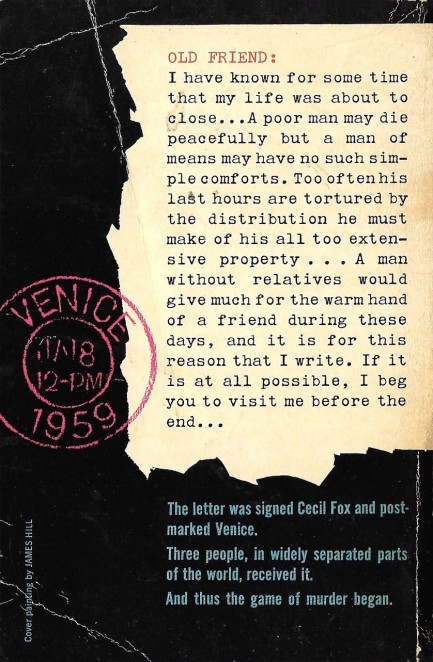
| Vintage Pulp | May 12 2022 |

Pack light and leave your inhibitions behind.
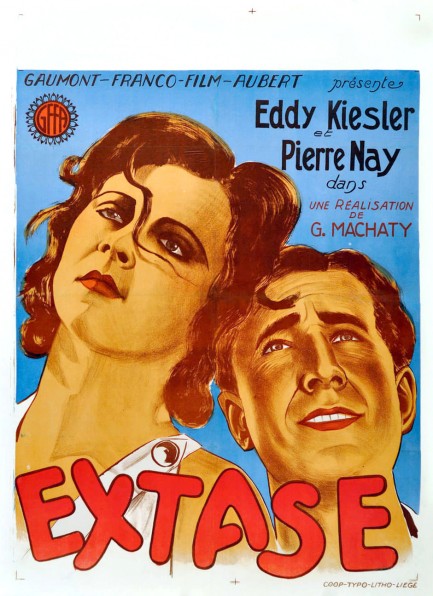
This poster was made in Liege, Belgium for the romantic drama Extase, starring Austro-Hungarian beauty Hedy Lamarr. Based on a novel by the Vienna born author and actor Robert Horký, the film opened in Belgium today in 1933, after having premiered in then-Czechoslovakia as Ekstase in January of that year. It isn't a pulp style film, but it's significant, which is why we had a look. It's about a young upper class woman in an unfulfilling marriage who solves that problem by acquiring a sidepiece in the form of a worker played by Aribert Mog. This results in some steamy moments and—some viewers say—the first orgasm ever depicted onscreen. “Some viewers” are right. There's no doubt. In the midst of a nocturnal tryst Mog's head and torso slide off-frame, as Lamarr breathes more and more heavily before finally grimacing in lovely fashion and snapping her string of pearls.
Yeah, this is hot stuff for 1933. And we thought everyone was having a great depression. Shows what we know. If the title Extase doesn't tell you what's going on, consider the fact that Hedy's character is named Eva, and Mog's is named Adam. It's that kind of movie. In a way, an orgasm was inevitable. Lamarr also captures moviegoers' attention with a nude swim and sprint through the fields that occurs about twenty-eight minutes in. Why's she running around starkers? Her mare Loni decides to get herself some equine action and abandons Hedy—taking her clothes along for the ride. Always make sure to tie your mount to something, especially when it's horny. Lamarr really is naked in the scene, too, which few modern performers would do in this age of new puritanism. It's thanks to this run through the wild that she meets Mog, the eventual master of her clitoris, if not her heart.
Extase isn't a silent film, but it's close. There's a lot of orchestral music and only a dozen or so sections of dialogue. Even so, it's very watchable. The visuals tend to be laden with meaning in films such as these, but some scenes require no interpretation at all, like the bit where a couple of horses mate (not Loni and her love, sadly). They don't show it of course, but the crash zoom of a mare's backside from the point-of-view of the stud horse gets the idea across with remarkable subtlety—not. It was hilarious, actually. But hey—even horses feel extase, because it's just a natural thing, see. On its own merits we'd call Extase more of a curio than a cinematic triumph, but it certainly achieves what it sets out to do, and that's success of a form, even if it would be forgotten without the orgasm. But that's often true, isn't it?
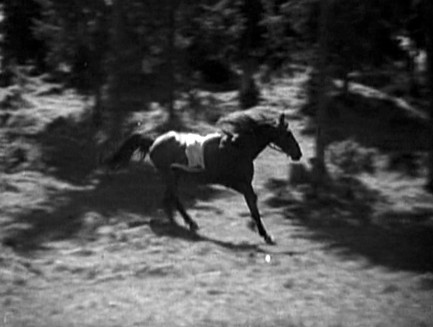
 Loni! Come back, you stupid horse! That jumpsuit doesn't even fit you!
Loni! Come back, you stupid horse! That jumpsuit doesn't even fit you!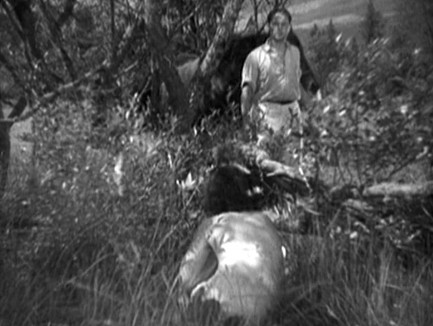 Why hello, lovely naked creature.
Why hello, lovely naked creature. You rude beast! Try taking a picture. It'll last longer.
You rude beast! Try taking a picture. It'll last longer.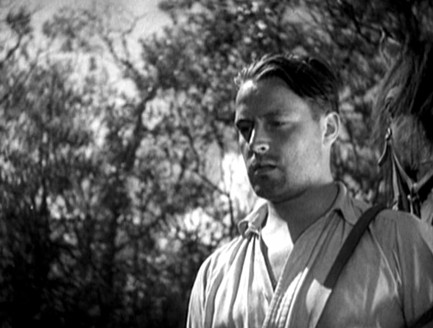 Already done. With my mind. Deposited you right in the spank bank.
Already done. With my mind. Deposited you right in the spank bank.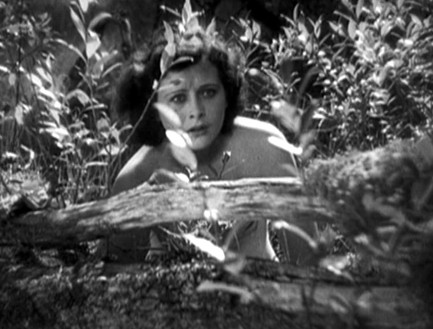 Bank— What? Spank what? Oh, never mind. Give me my clothes.
Bank— What? Spank what? Oh, never mind. Give me my clothes.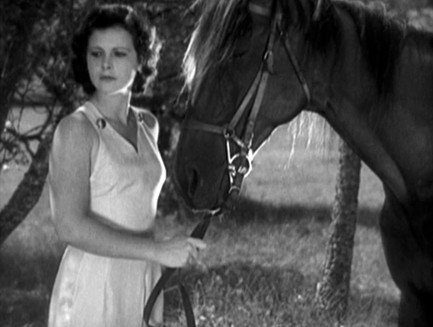 Objectify me, will you? Two can play that game. Duh... nice package! Duh... I'm an idiot!
Objectify me, will you? Two can play that game. Duh... nice package! Duh... I'm an idiot!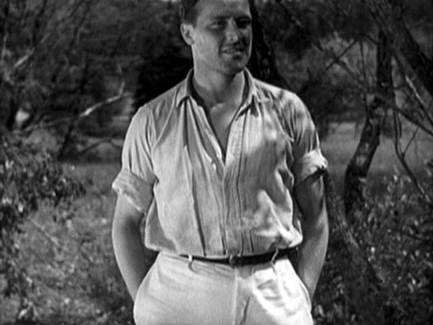 Thanks. And you're not an idiot—many women agree with you about my package.
Thanks. And you're not an idiot—many women agree with you about my package.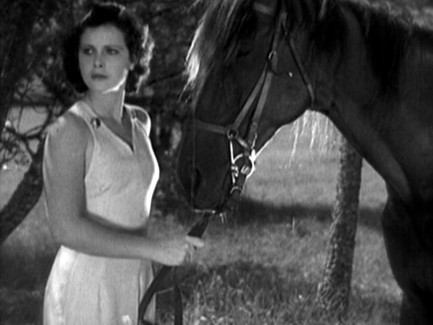 No, I'm objectifying you, like you did to me.
No, I'm objectifying you, like you did to me.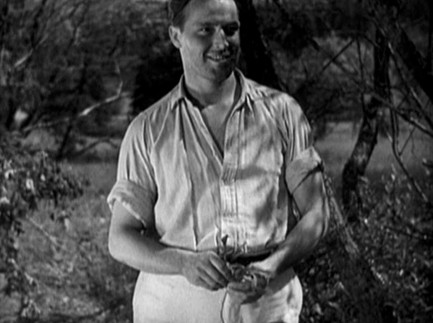 Like a sex object. I understand. That's cool. I love sex.
Like a sex object. I understand. That's cool. I love sex.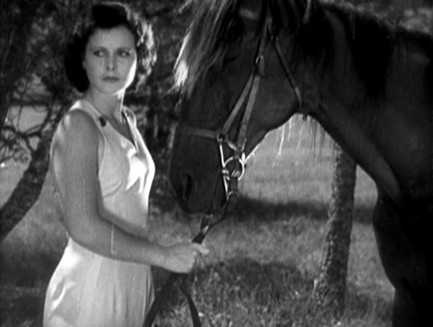 No, I mean I'm debasing you via the reduction of any unique and admirable qualities you might have down to the purely phy— Oh, forget it! You're too dumb to understand.
No, I mean I'm debasing you via the reduction of any unique and admirable qualities you might have down to the purely phy— Oh, forget it! You're too dumb to understand.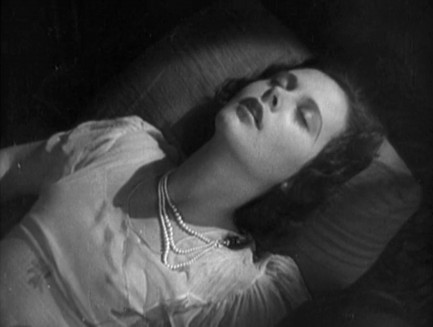 Oh... oh... oh! It's true he lacks... formal education...
Oh... oh... oh! It's true he lacks... formal education... But he sure knows how... to make a girl... SNAP HER PEARLS!
But he sure knows how... to make a girl... SNAP HER PEARLS!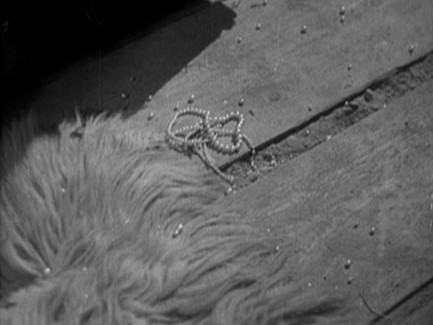 *sigh*
*sigh*| Vintage Pulp | May 5 2022 |

Twentieth Century Fox chooses goofs over thrills for Blaise adaptation.
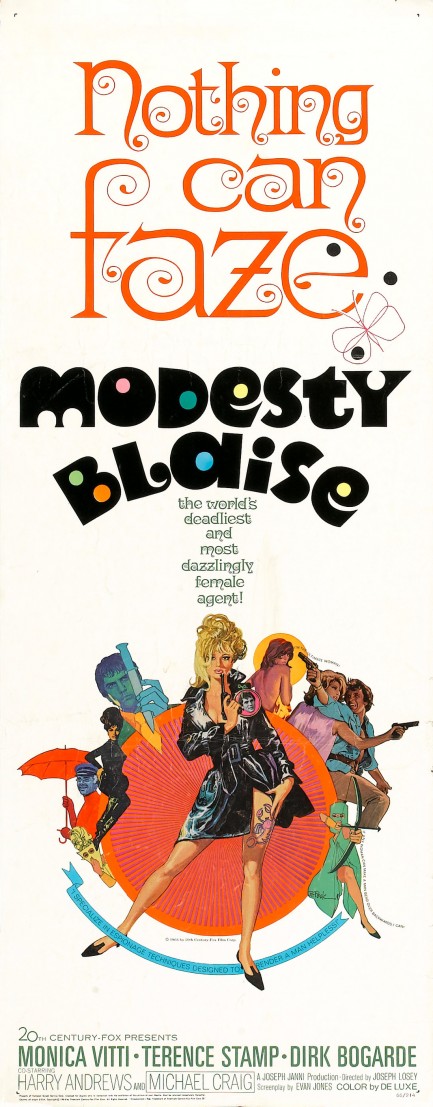
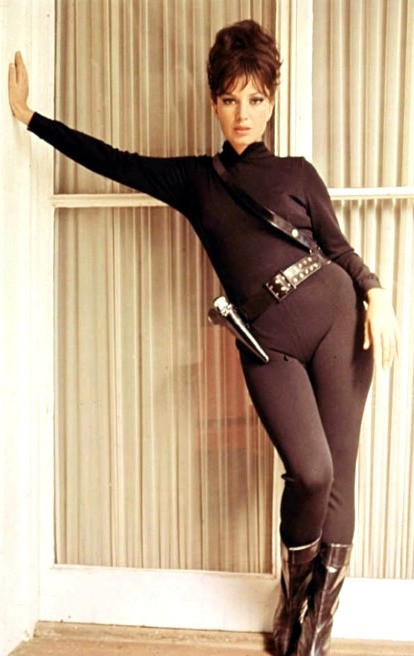 After writing about the first four Modesty Blaise novels over the last few years we figured it was time to talk about Twentieth Century Fox's cinematic pass at character. You see a brilliant poster for the movie adaptation above by Bob Peak, who seems to be reminding people that Robert McGinnis wasn't the only painter capable of working in this style. Two more versions of the poster appear below, and you can another example of his work here.
After writing about the first four Modesty Blaise novels over the last few years we figured it was time to talk about Twentieth Century Fox's cinematic pass at character. You see a brilliant poster for the movie adaptation above by Bob Peak, who seems to be reminding people that Robert McGinnis wasn't the only painter capable of working in this style. Two more versions of the poster appear below, and you can another example of his work here.We'd heard for years that Modesty Blaise is a terrible movie, but it isn't—lightweight might be a better description. It's based on the debut novel, and while author Peter O'Donnell plays it straight apart from the affable relationship between Blaise and her partner Willie Garvin, here in the movie Blaise has a space age apartment, a sentient computer, a huge lobster tattoo on her thigh, an adoptive father, and a referential theme song. The villain, meanwhile, drinks goldfish water, wears a chauffeur's cap, and uses a Japanese pai pai fan. At a couple of points Blaise and Garvin burst into song together. All these touches must have baffled fans of the book, and indeed the additions are pointless in our opinion, but that's cinema. Filmmakers are not transcribers—they're translators, and if you know anything about translation you know it's not done literally.
The main question is whether star Monica Vitti does the legendary main character justice. It was a lot to ask, after Modesty became popular thanks to three years of popular daily comic strips followed by a well received novel. We think she manages fine with the material she's given, but there's the rub. While the screenplay follows the basic thread of the novel, the flow is clunky and the dialogue is cluttered with non-sequitur asides and attempts to be cute that make Vitti resemble Emma Peel from The Avengers rather than the lethal woman O'Donnell created. In terms of the actual story, Modesty is tasked with stopping a master criminal from stealing a cache of diamonds meant for her father (we know, we know—she's an orphan in the books, and it defines her character). She's had dealings with this quirky crook before and would like to settle matters between them permanently. That means traveling from London to Amsterdam to his rocky stronghold on Sicily for a final showdown—in good pumps and a diaphanous haute couture a-line dress.
The action, which is central to the books and written with deadly seriousness, is mostly played for laughs. We mean even to the extent of villains crashing into each other to the accompaniment of circus music. We think this is probably the movie's only unforgivable sin. O'Donnell took pride in his action sequences, underpinning them with ingenious forethought by Blaise and Garvin and violent precision in execution. All the humor and cuteness would have been fine if the movie had thrilled where it most needed to, but no such luck. So in the end what you get is a cutesy spy caper of a type that was all too commonplace during the 1960s, but even goofier than most. We think the movie should have been something fresh and surprising, and in ways that go beyond its glossy high fashion aesthetic. Unfortunately, the final result is no better than watchable, though it becomes progressively more enjoyable the more booze that's ingested. Hit the liquor store before screening it and you'll find out for yourself. Modesty Blaise premiered in London today in 1966.


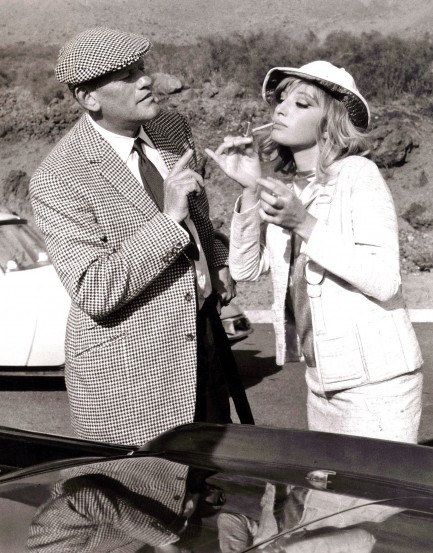
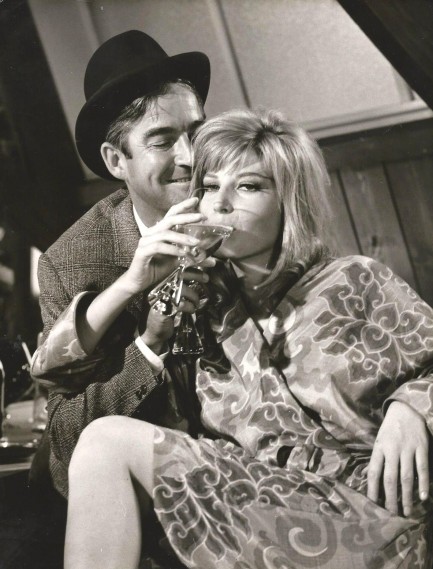

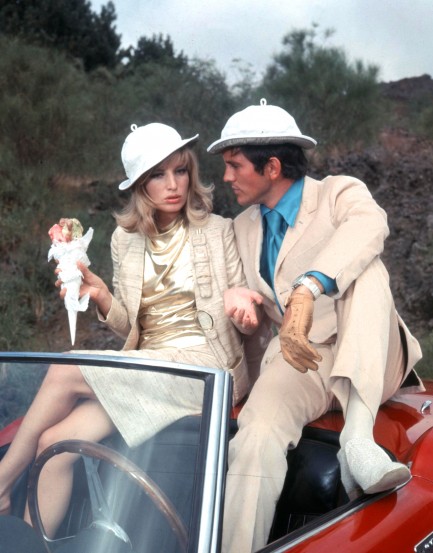

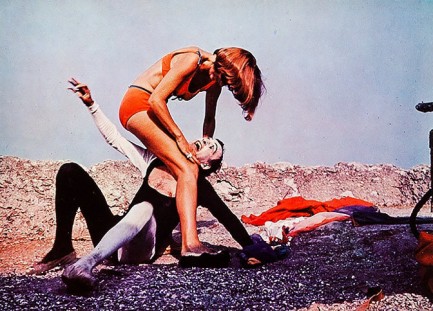
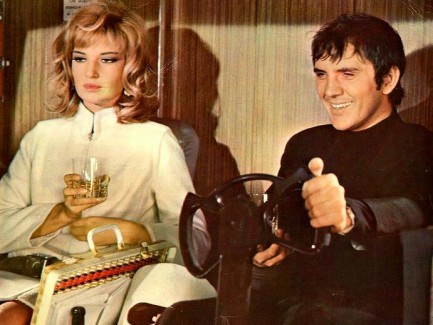
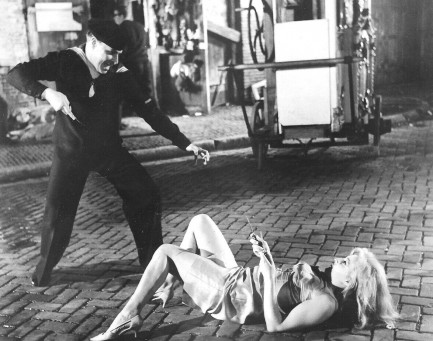
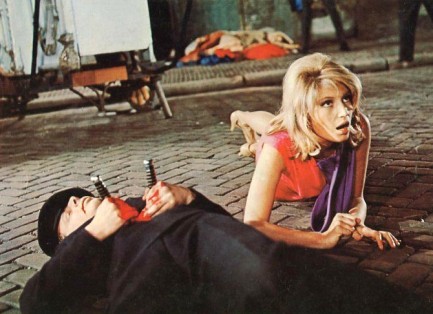
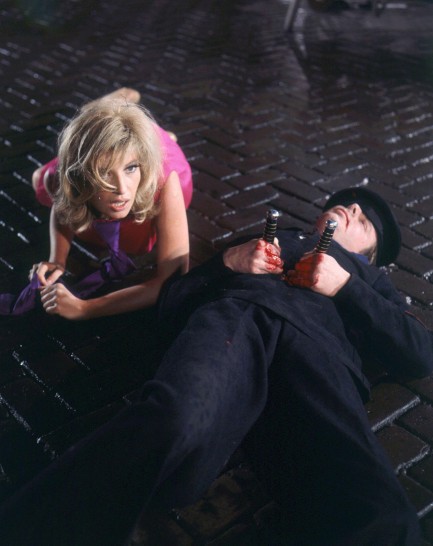




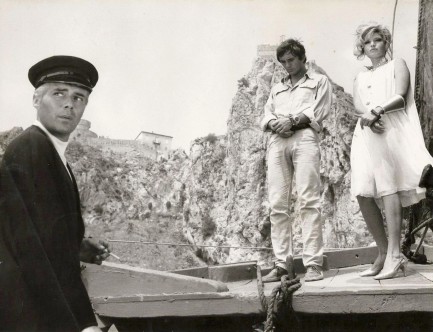
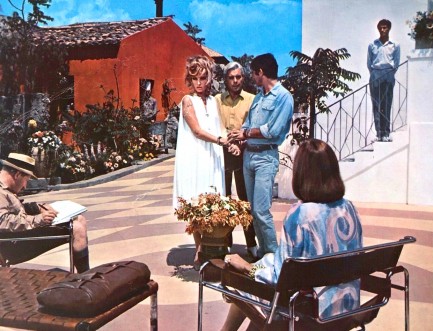

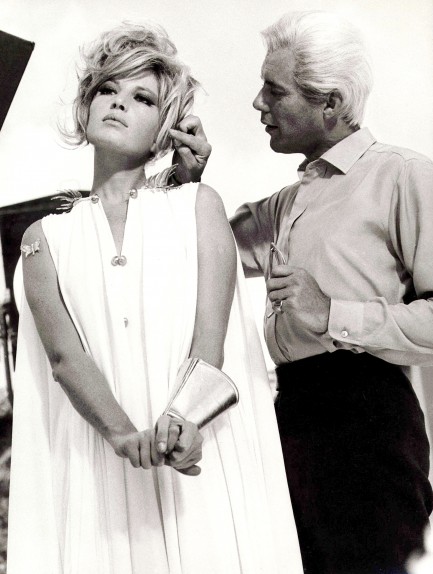

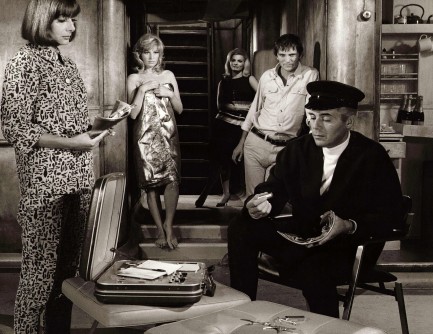


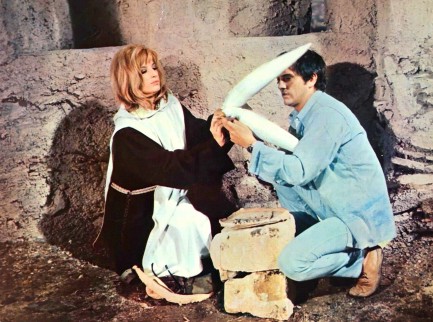


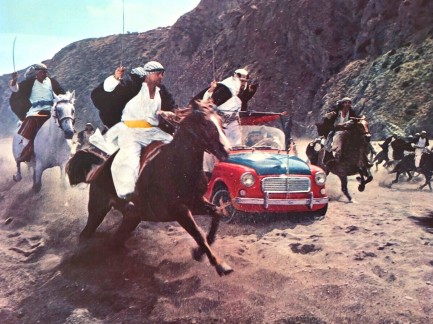
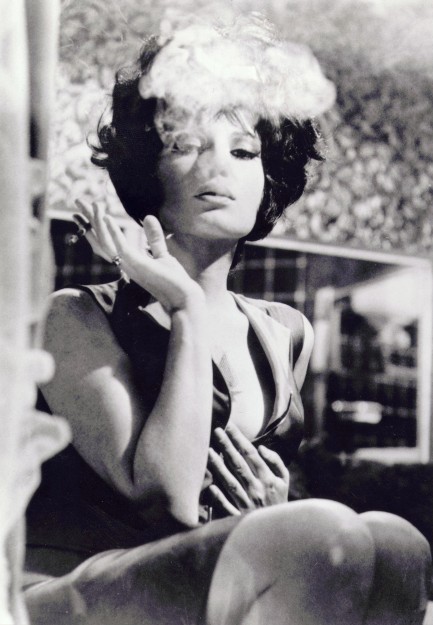
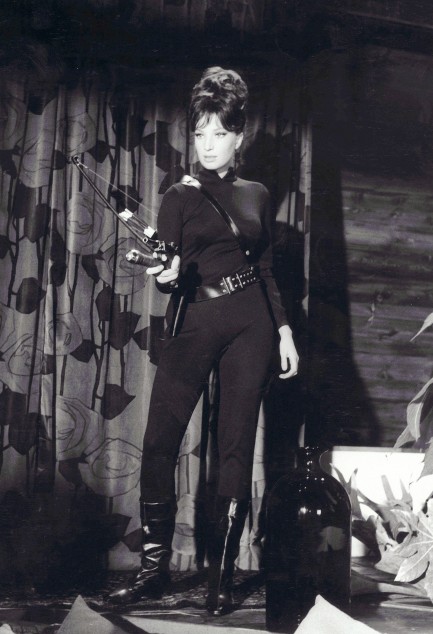
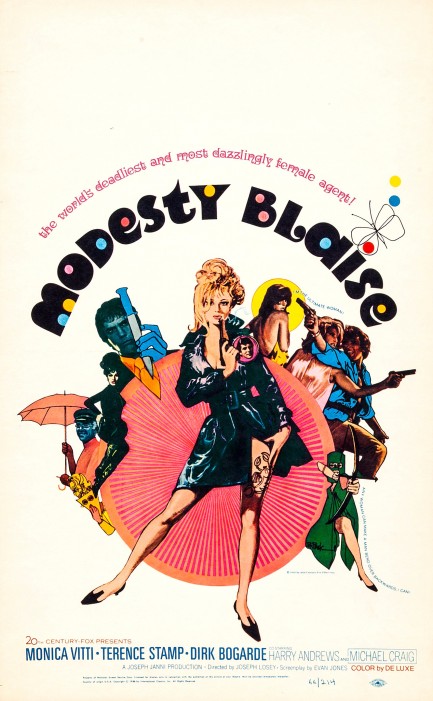
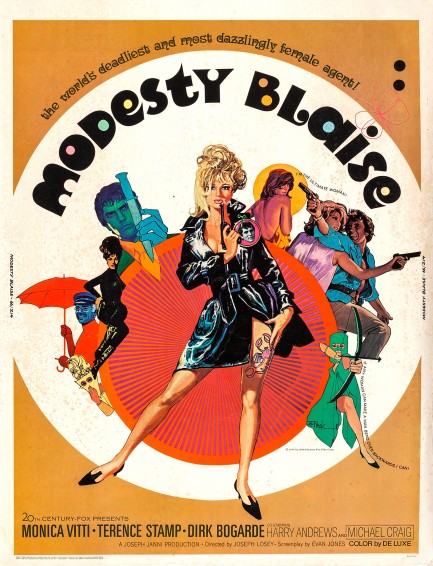
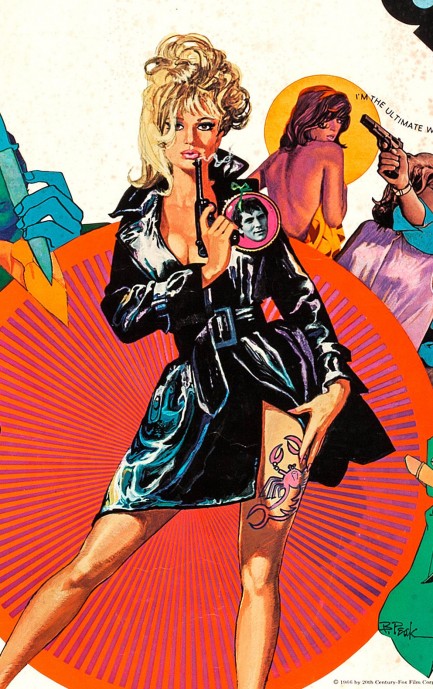

































| Vintage Pulp | May 4 2022 |

Touch a hot Stover and you'll get burned.
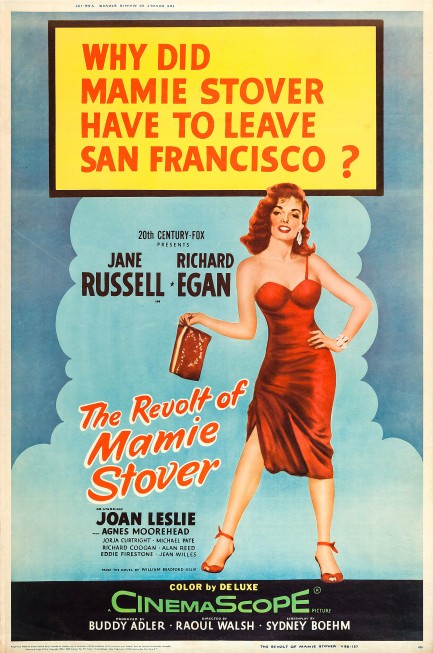
Above is a promo poster made for the Jane Russell drama The Revolt of Mamie Stover, which premiered in Honolulu today in 1956, and was sourced from William Bradford Huie's novel, a book we discussed at length some months back. The movie was directed by Raoul Walsh of Casablanca fame. He's properly credited on the above art, but for some reason on the second poster, which you'll find below, his name appears as Walsh Raoul. It's a weird mistake to get past so many studio eyes, but things like that happen, we guess. The U.S. art is uncredited, but the third poster, also below, was made for the film's British release and that was painted by Jock Hinchcliffe. He wasn't a noted stylist whose work is especially sought after today, but he did paint numerous posters, and he signed the piece below. Anyone who did that gets singled out here, because so few artists were credited by the studios.
Regarding the movie, needless to say, the challenging themes of Huie's novel were turned on their head by Hollywood. Mamie is no longer a racist toward Hawaiian islanders—in fact, the one islander character who gets to speak is bigoted against her. And she's no longer a prostitute but a hostess who induces men who frequent Honolulu's Bungalow Club to buy more booze and pay extra for private time. That private time takes place in a rattan decorated sideroom, but there's no bed evident. Instead there's a table and two chairs, so apparently men pay just to chat with Mamie, and the other women at the club. There's a sexual implication, but of the barest sort, because obviously Twentieth Century Fox could not have made a movie about Jane Russell prostituting herself 51,840 times—the exact number given in the book.
The Revolt of Mamie Stover is another example of suppressed sexual themes during the mid-century era, which is a big reason why we extend our purview at Pulp Intl. into erotic films and imagery—because in our era the previously unshown can be shown and openly examined. We've discussed this before. If you watch the movie, it's interesting to ponder the presumed maturity of book readers, who were asked point blank to consider a prolific prostitute the protagonist of the story, as opposed to cinemagoers, who were never presented with the possibility. In any case, the screen version of Stover, while not a sex worker, is at least a very knowing character, and Russell certainly has the sneer needed to pull off portraying a romantically cynical money worshipper determined to reach the top tax bracket no matter what it costs—her or others.
We figure anyone who has what it takes to get rich for simply, er, chatting with men deserves wealth, and indeed Mamie gets her money. That's not a spoiler, because it's never in doubt. It's part of the revolt—her resistance against forced membership in the underclass. The question is whether she can retain her newly gained higher status, and whether she can preserve the love she's stumbled upon along the way, because in American cinema moneyseeking characters must choose between their fortunes and their souls. That choice is supposed to supply the drama, but we think the movie is more interesting for its proto-feminist feel and class discussion. It's pretty good on all fronts, though, except that co-star Richard Egan is a bit of an empty shell. But he doesn't ruin it. How can he? He has Russell to carry him the entire ninety-three minutes.
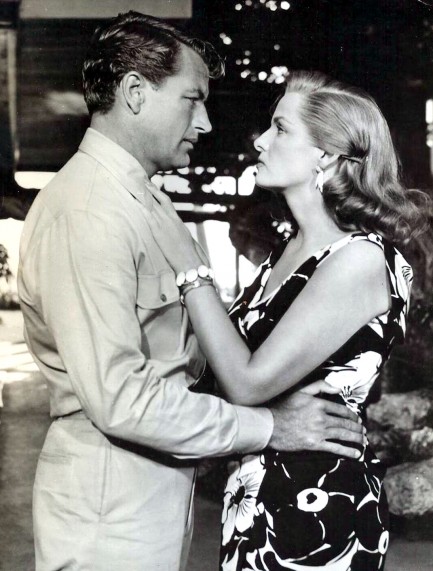

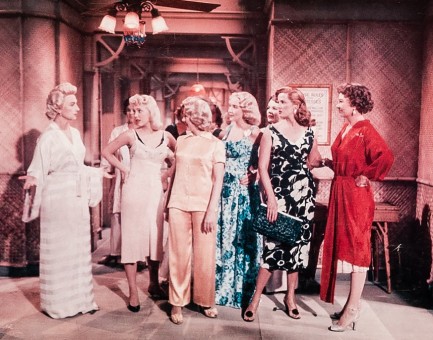
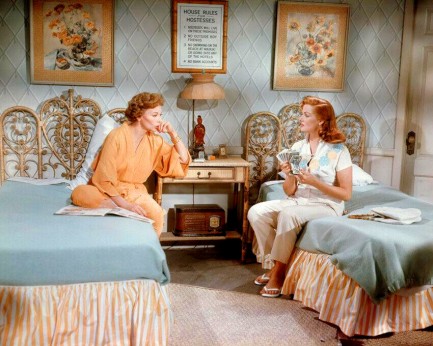

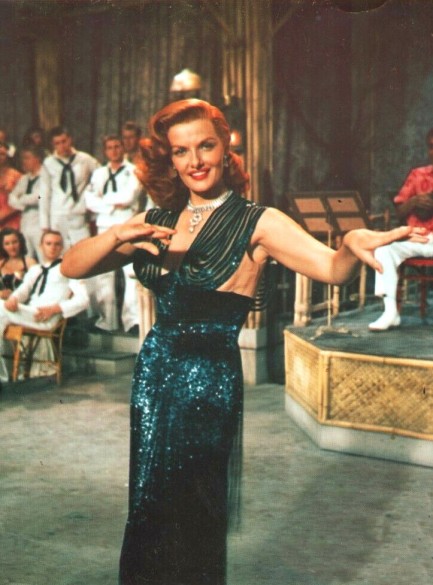
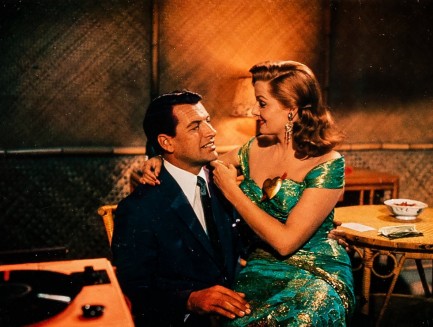
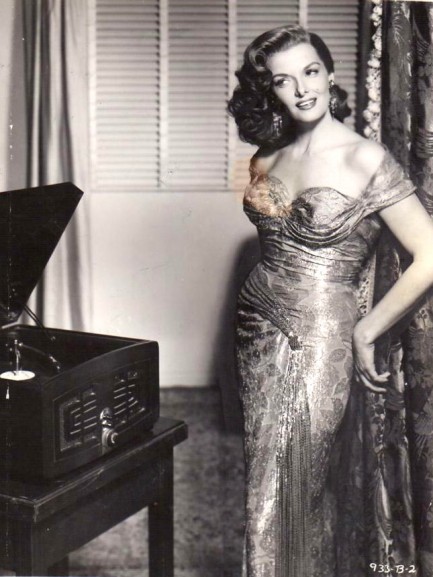
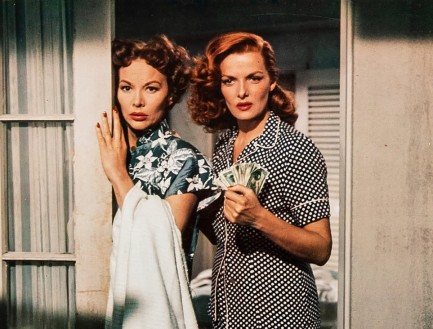



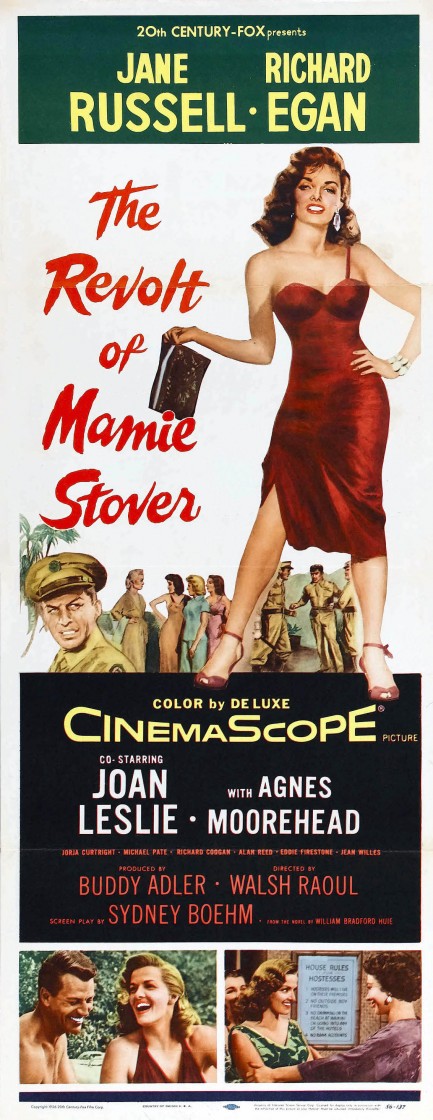
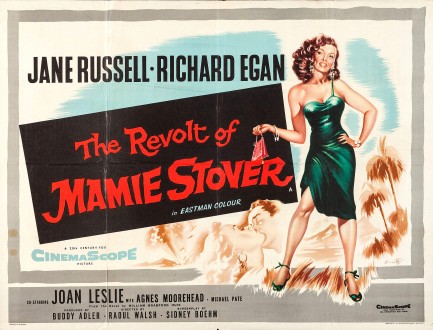
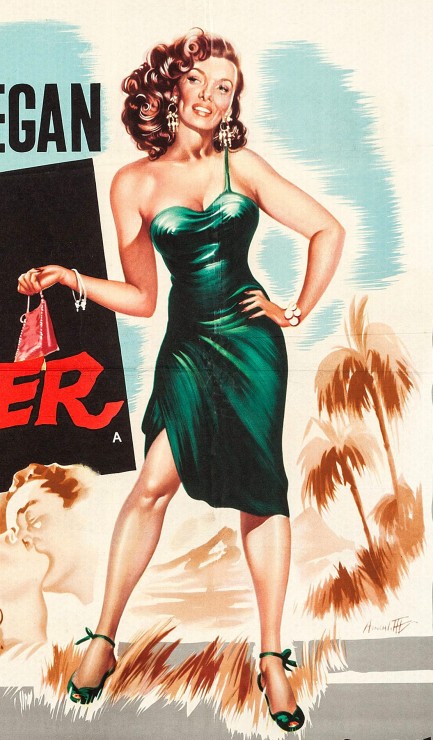















| Vintage Pulp | May 1 2022 |

Who do you think you're calling a lady?
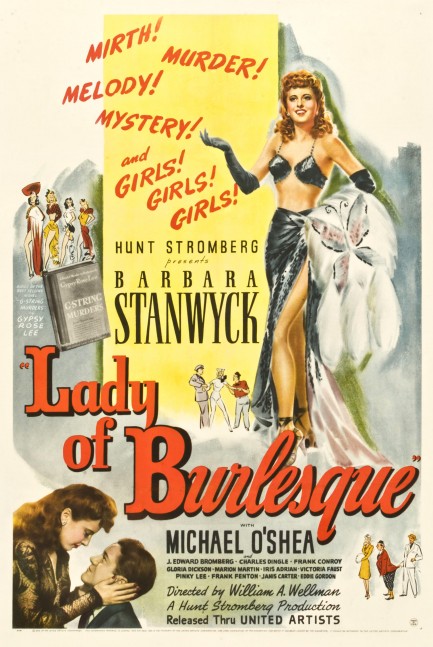
We had to watch this one. Lady of Burlesque is an adaptation of Gypsy Rose Lee's 1941 murder mystery The G-String Murders, which we talked about not long ago, describing it as a must-read due to its commingling of burlesque and murder. The movie sticks to much the same course as the book. Murder takes place backstage at a burlesque house and the dancers get together to try and solve the crime. Barbara Stanwyck is thirty-six here and showing excellent abs playing a rising stage star calling herself Dixie Daisy. She gets a solo dance that omits the bold bumps and hipshaking of true burlesque, but it's still a nice number.
The chief problem with Lee's novel is its clunky focus on backstage patter instead of the murder mystery. The movie solves that problem—not by focusing more on the mystery, but by bringing the entertaining burlesque and comedy performances to life, which replaces the weaknesses of Lee's book with strengths. Neat trick, and a pretty neat movie. Did Stanwyck ever headline a failure? We suppose she must have, but we haven't seen it yet. She's not thought of by some as a great cinematic beauty, but if you agree with that assessment this movie may change your mind. Lady of Burlesque premiered today in 1943.
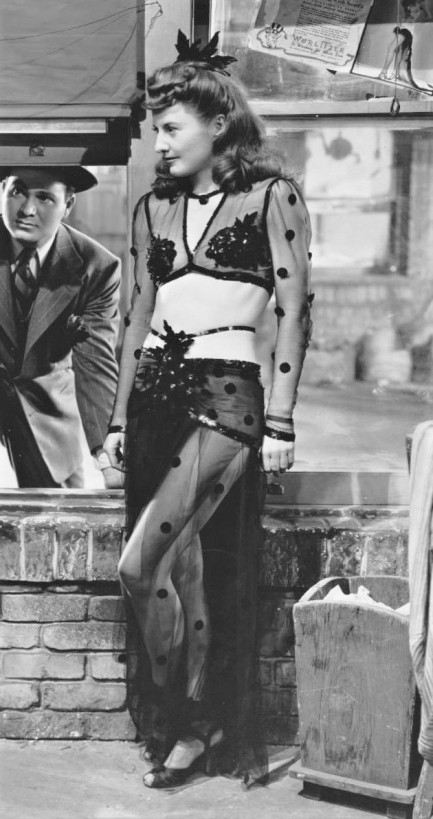
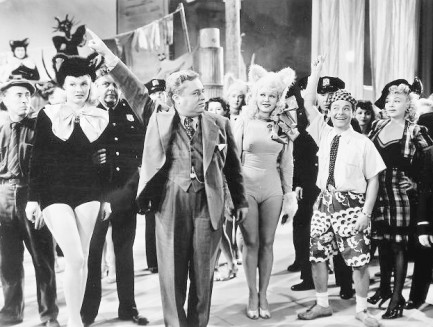
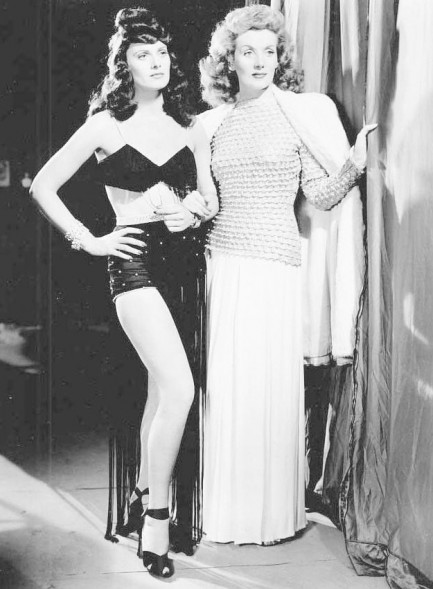
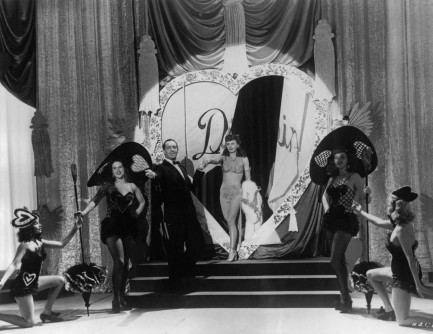
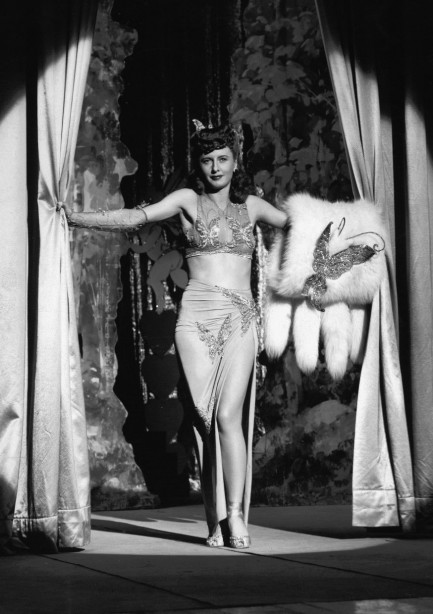
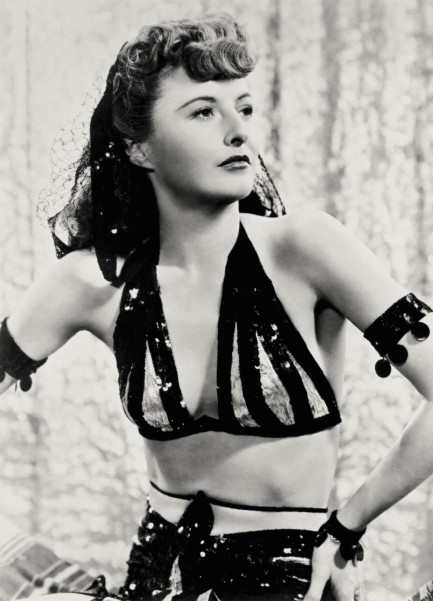






| Vintage Pulp | Apr 30 2022 |

Okay, in she goes. Now I just need some bubble wrap and a dozen or so pine air fresheners and she's good to ship.
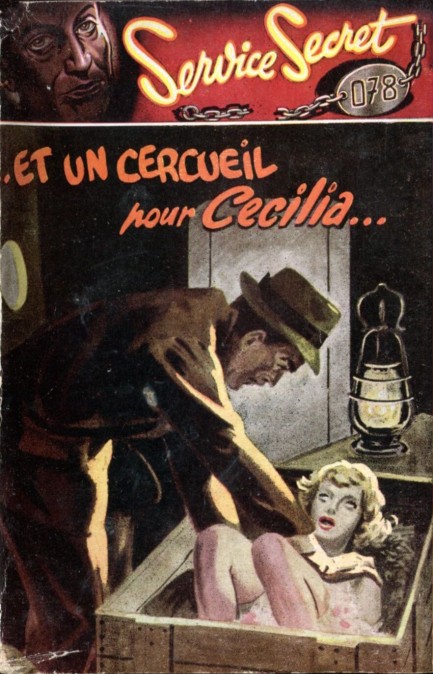
This is such a macabre image, a man stuffing a woman's corpse in a crate, that we probably should have posted it around Halloween. 1958's Et un cercueil pour Cecilia was written by Francis Richard, aka Paul Bérato, for Société d'Editions Générale and its collection Service Secret 078. This is one of those tales where the author pretends to be the hero. In other words, it was written by Bérato as Francis Richard, but the main character is also named Francis Richard, and he's a globetrotting spy who heads to Chile on a mission, where the villains apparently crate up corpses. Though the grim art on this is not attributed, others in the series were signed E.G. or F.G. and the style here is similar. Unfortunately, we don't know who E.G. or F.G. is.
| Vintage Pulp | Sportswire | Apr 29 2022 |

If a boxer falls when nobody hits him is it still a knockout?
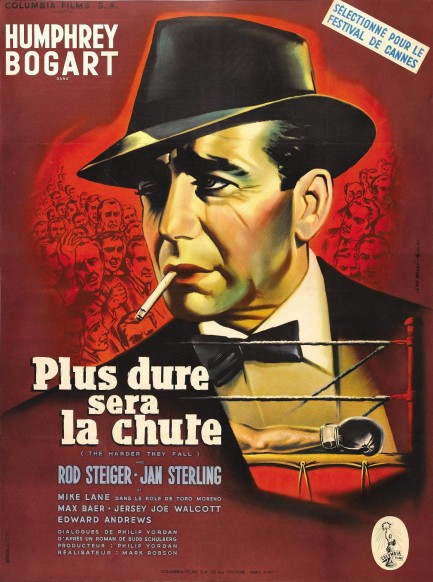
We've been neglecting French promo art lately, so here'a a little something—a poster for Plus dure sera la chute, which is better known as The Harder They Fall. This was painted by Jean Mascii, whose work we last saw several years ago when we talked about the 1960 thriller Plein soleil. We recommend having a look at that to get a better sense of Mascii's skill. He created a very interesting portrait of Humphrey Bogart for this effort. This was Bogart's last movie. He filmed it while gravely ill, having been diagnosed with esophageal cancer, but did his work in legendary style, a true professional, working long hours, shooting retakes, and generally doing all he could to prevent his condition from affecting the production.
Bogart plays a struggling sports writer hired by shady fight promoter Rod Steiger to be the press agent for his new discovery—a gigantic but glass-jawed carnival strongman from Argentina named Toro Moreno. Steiger wants Bogart to sell Toro as the next great heavyweight contender, but in order to do so they need to send him on a bum-of-the-month tour to knock out a series of hapless opponents paid to take dives. After Toro has been built up in the press as the second coming of the heavyweight division, Steiger plans to make a bundle with a match against the champ, played by Max Baer. Bogart signs on for this ride because after all his work in the newspaper business he has nothing, and wants to finally make real money. But it could cost his reputation, and because Toro has no clue the fights he's winning are fixed, the scheme can only end with the poor overconfident dupe slaughtered by the champ.
Steiger would win an Academy Award in 1967 for In The Heat of the Night, and here, more than a decade earlier, you can see that achievement as almost inevitable as you watch him dominate the screen. He's simply great in this, and Bogart gives an excellent performance too, failing physically but soldiering onward, using that world weary mug of his to impart a lifetime's worth of fatigue and disappointment. The movie also features Jan Sterling. We had no idea she'd gone in for rhinoplasty, and at first weren't positive it was her. It is though, and after writing just recently how gorgeous she was we're sad she didn't see her own perfection and instead chose to go under the surgeon's knife. But her body her choice. She's good as always, here playing Bogart's conscience, trying to keep him from sliding down the slippery slope to amorality.
There's another person who should be mentioned—Mike Lane as the lumbering Toro Moreno. This was his debut role, and you'd think there weren't many more parts out there for a guy standing 6'8”, but surprisingly he accumulated almost seventy acting credits, almost all on television, where he appeared in shows of every type, from Gunsmoke to Get Smart. Obviously, any vintage boxing movie involves mimetic acting, and the fighting here isn't realistic—quantum leaps in how to convincingly portray ring scenes came later—but they serve their purpose. And for boxing realists, the movie gets extra credit due to the presence of both Baer and Jersey Joe Walcott. The Harder They Fall opened in March 1956, and had its French premiere today at the 1956 Cannes Film Festival.
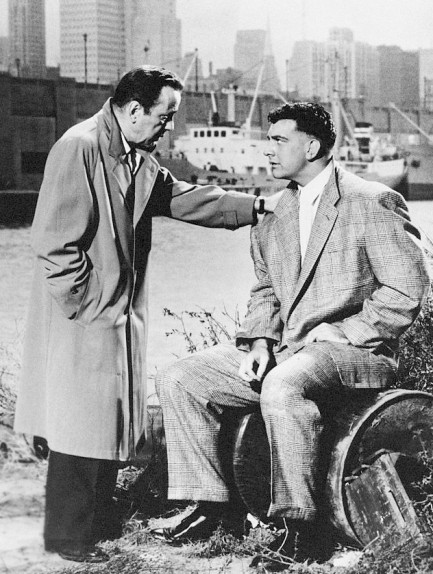 Fine, Toro, you're huge. Massive. Enormous. But you need to learn how to box or the champ is going to crush your face like a graham cracker.
Fine, Toro, you're huge. Massive. Enormous. But you need to learn how to box or the champ is going to crush your face like a graham cracker.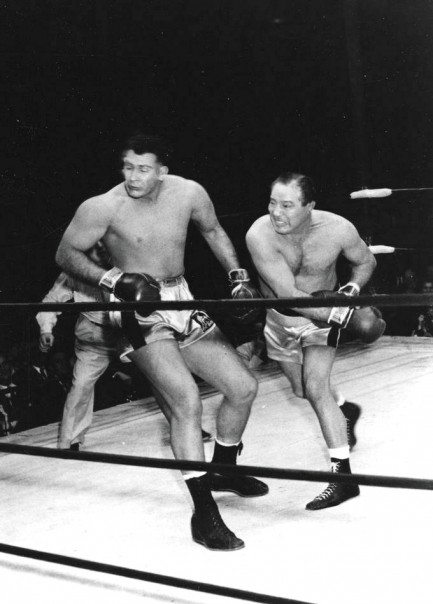 Hi, champ! Before we start, I just want to say I'm probably your biggest admir—
Hi, champ! Before we start, I just want to say I'm probably your biggest admir— I thought that whole graham cracker speech was just Bogie being colorful.
I thought that whole graham cracker speech was just Bogie being colorful.| Vintage Pulp | Apr 23 2022 |

If you think you'll get Bardot down the aisle you've got another think coming.
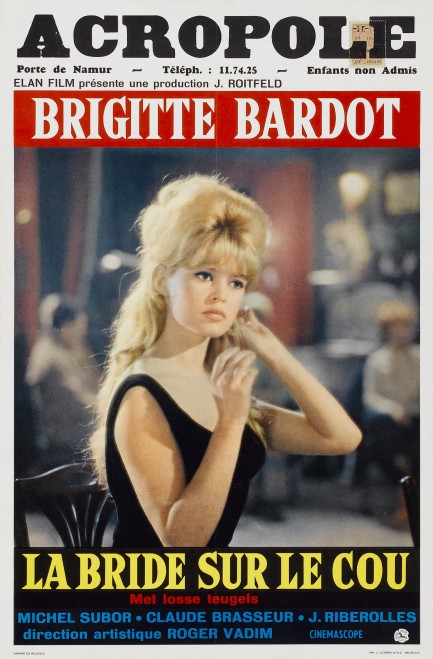
We meant to share this several days ago, but you know how that goes. It's a Belgian promo poster for Brigitte Bardot's Le bride sur le cou, with the Dutch title Met losse teugels in red just below the French. You might think, based on the French title, that the movie is about a bride, but that word, which has the same origin as the English word “bridle,” means “strap,” and the title translated would be, “the strap on the neck.” In Dutch, the title translates as, “with loose reins,” so that should make clear that the movie is actually about trying to control a wild Bardot. There's little chance of that, and wild is an understatement. She turns Paris upside down. In the U.S. the movie was released under the title, Please, Not Now! The poster is worth a share because it's built around a rare image of Bardot, and the movie is worth a watch because Bardot was a phenomenon. There's no known release date for Belgium, but probably it premiered there—this poster promotes showings at the Acropole Cinema in Brussels—in the spring of 1961.
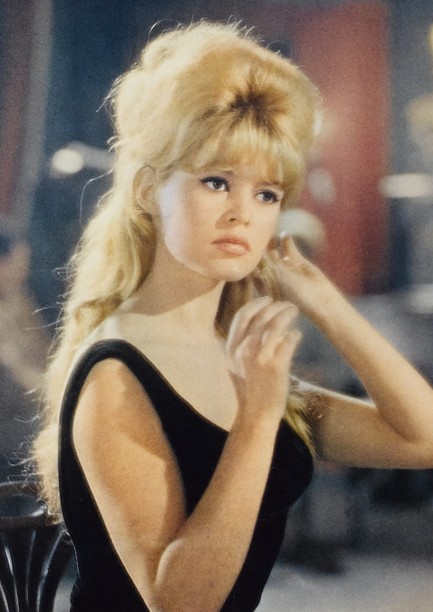
| Vintage Pulp | Apr 22 2022 |

So explain to me again exactly what my duties are as dolly grip.
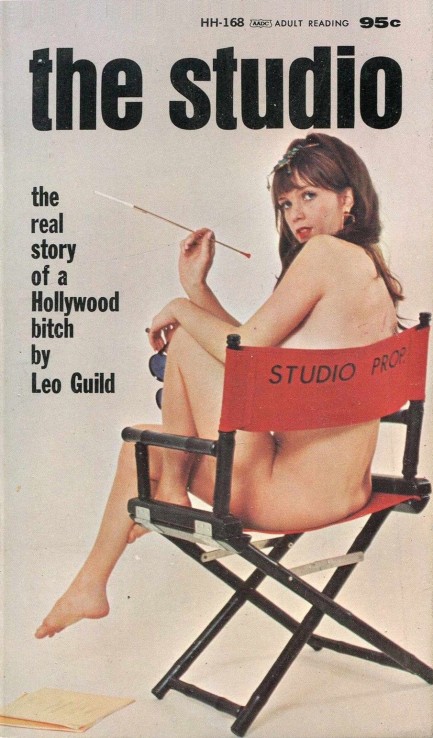
Above: a photo cover for Leo Guild's 1969 sleaze novel The Studio. The rear tells you most of what you need to know, except that the book is written from the first person viewpoint of none other than—Leo Guild. Ego much, Leo? He takes on the guise of a journalist who becomes the publicity agent for Toni Tremont, described as a Hollywood bitch. He's the latest in a long line of agents to represent her. The fiction is really just a guise for Guild to promote his personal brand while claiming to tear back the curtain from the “real” Hollywood, something at least a hundred authors did before him.
Guild has a reputation for being one of the worst authors ever—he once wrote a novel in which a werewolf and a vampire become television stars, and he churned out such books as Black Bait, Black Champion, The Black Shrink, The Girl Who Loved Black, Black Streets of Oakland, and Street of Ho's [sic]. In other words, he was a consummate opportunist and trendjumper. He found his most lucrative subject matter in lurid biographies, but also wrote a joke book, a book about gambling systems, and a tie-in to the television show What Are the Odds? The man was one of a kind. Thankfully.
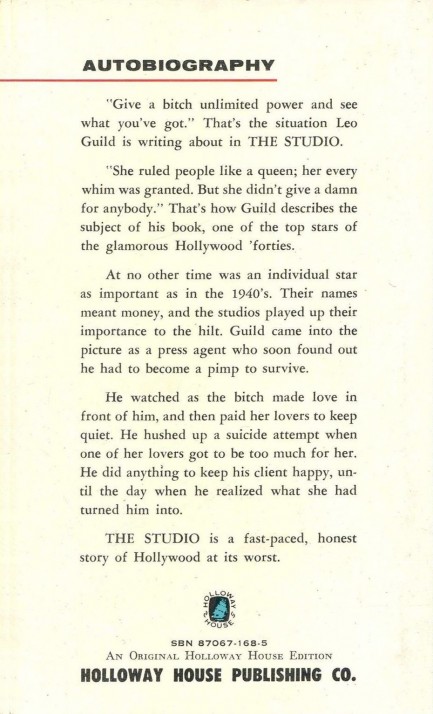
| Vintage Pulp | Apr 21 2022 |

Only a king of cover art is fit for a queen of espionage.
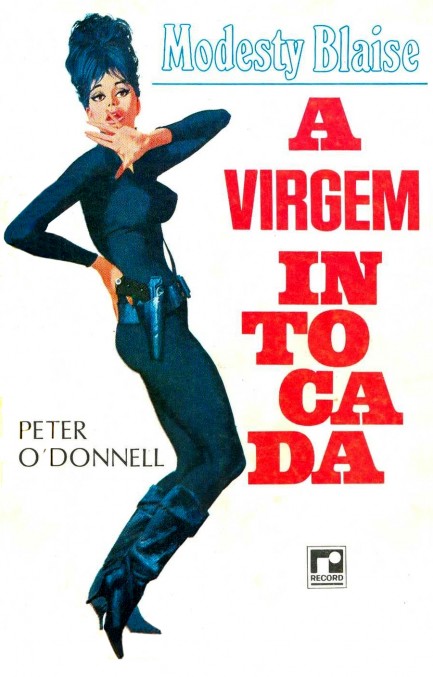
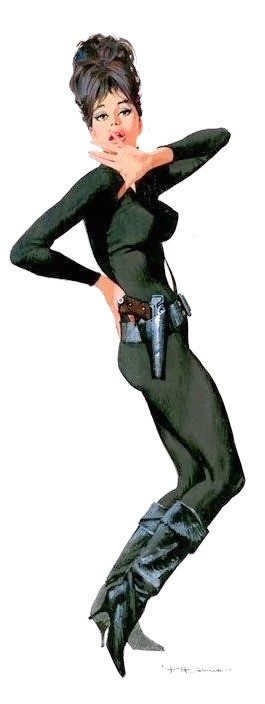 We said we'd show you a Brazilian Robert McGinnis cover for a Modesty Blaise novel, and here it is. What a nice piece of art. The English language editions lost their McGinnis fronts with book three of the Blaise series in 1969, but somehow Grupo Editorial Record managed to get his art for A virgem intocada, known in English as The Impossible Virgin, fifth in the series, 1971. Why the U.S. and British editions did not get this art is a mystery. We debated reading this tale and talking about it a bit, but by now you've gotten the gist of Modesty and Co. If not, just check here, here, here, or here.
We said we'd show you a Brazilian Robert McGinnis cover for a Modesty Blaise novel, and here it is. What a nice piece of art. The English language editions lost their McGinnis fronts with book three of the Blaise series in 1969, but somehow Grupo Editorial Record managed to get his art for A virgem intocada, known in English as The Impossible Virgin, fifth in the series, 1971. Why the U.S. and British editions did not get this art is a mystery. We debated reading this tale and talking about it a bit, but by now you've gotten the gist of Modesty and Co. If not, just check here, here, here, or here.Also, you see here a clean version of the art. We talked before about how we suspect Editorial Record sometimes used but didn't actually license art for its covers. Notice how the clean art, even at smaller size, has more detail—almost like Record had a McGinnis lithograph they photographed and reprinted? Seems to us that if the company had paid for the art they'd have ended up with a fully detailed cover. Circumstantial evidence—yes. But incriminating. Or maybe the printing process was simply not top level and detail was lost. Still, a nice cover.
 |
 |




































































